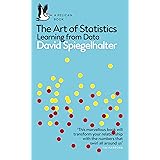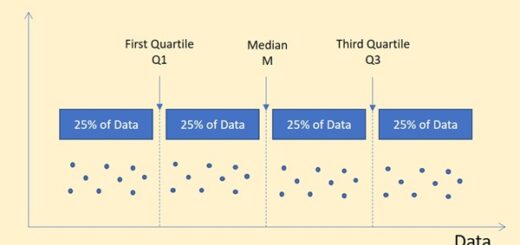Left-Skewed and Right-Skewed Distributions: Guide
Left-Skewed and Right-Skewed Distributions, one of the key aspects to consider is the shape of the distribution.
Understanding whether your data is left-skewed or right-skewed can provide valuable insights into its characteristics and allow for better interpretation of your findings.
Left-Skewed and Right-Skewed Distributions
In this article, we will delve into the definitions, properties, and real-world implications of left-skewed and right-skewed distributions, along with helpful examples.
What is Skewness?
Skewness refers to the measure of asymmetry in a statistical distribution. A distribution can be perfectly symmetrical, which means that it has a mirror image on both sides of the central point.
However, many real-world data sets do not follow this ideal scenario and exhibit skewness.
In statistics, we typically assess skewness using the Third Moment about the mean, which helps us quantify the degree of asymmetry.
Left-Skewed Distribution
A left-skewed distribution, also known as negatively skewed, is one in which the tail on the left side of the distribution is longer or fatter than the right side.
This asymmetry suggests that while most data points are concentrated on the right, there are a few lower-than-average values pulling the mean to the left.

In such distributions, the mean is typically less than the median, which is less than the mode.

Characteristics of Left-Skewed Distribution:
- Shape: The left tail is longer than the right, indicating that there are outliers or extreme values on the lower end.
- Mean, Median, and Mode Relationship: In a left-skewed distribution, the order is typically: Mode > Median > Mean.
- Examples: Real-life examples of left-skewed distributions can include age at retirement (most people retire at a certain average age, but some retire much earlier) and income levels in certain cases where a majority earn above a certain threshold but a few earn significantly less.
Identifying Left-Skewness:
To determine whether a dataset is left-skewed, you can visualize it using histograms or box plots.
Additionally, calculating the skewness coefficient (a numerical representation of skewness) can provide insight. A negative skewness value typically indicates a left-skewed distribution.
Right-Skewed Distribution
Conversely, a right-skewed distribution, often referred to as positively skewed, is characterized by a longer or fatter tail on the right side.
This indicates that, while most data points cluster towards the left, there are some higher-than-average values that stretch the mean towards the right.

In a right-skewed distribution, the mean is generally greater than the median, which is greater than the mode.

Characteristics of Right-Skewed Distribution:
- Shape: The right tail extends further than the left, indicating the presence of outliers or extreme values on the higher end.
- Mean, Median, and Mode Relationship: In a right-skewed distribution, the order is typically: Mean > Median > Mode.
- Examples: Common examples of right-skewed distributions can include income data in a population, where a small number of individuals earn substantially more than the majority, or the time taken to complete a task where most people finish quickly, but a few take significantly longer.


Identifying Right-Skewness:
Similar to left-skewness, you can analyze right-skewed distributions through visualizations such as histograms or box plots.
A positive skewness coefficient value can also indicate right-skewness.

Real-World Applications of Skewness
Understanding the skewness of a dataset is crucial in fields ranging from finance to healthcare. Here are some implications of recognizing skewness:
- Statistical Analysis: Skewness can affect statistical tests, making normality assumptions (often required for valid results) questionable. Transforming left or right-skewed data to achieve normality may be necessary.
- Data Interpretation: Recognizing skewness helps in interpreting the central tendency and variability of the dataset more accurately. For example, in salary distributions, focusing on the median rather than the mean is often more reflective of the typical income.
- Predictive Modeling: In predictive analytics, understanding skew tendencies can guide model selection and feature engineering, leading to improved accuracy and insights.
Conclusion
In summary, recognizing whether a distribution is left-skewed or right-skewed is a fundamental aspect of data analysis that can significantly influence how you interpret and act on that data.
By understanding the properties, implications, and identification techniques associated with skewness, data analysts and researchers can derive more meaningful insights from their datasets.
Armed with this knowledge, you can navigate the complexities of data interpretation more effectively, leading to better decision-making in your respective fields.
Statistical Analysis» Statistics Methods » Quick Guide » FINNSTATS











